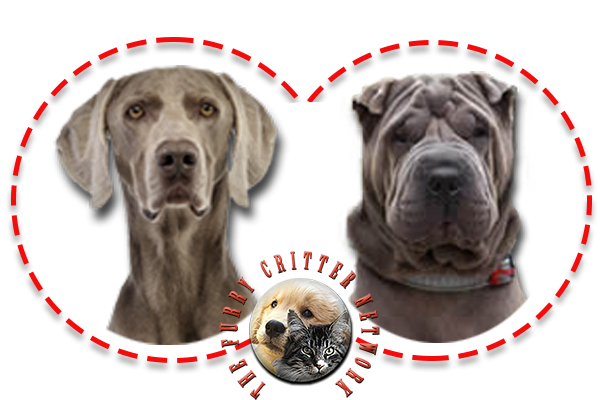Behavior
Shar-Pei puppies need early socialization with children, strangers, and other animals. Like other fighting breeds, they can be stubborn, strong-willed and very territorial. Early training can help control these traits before they become problem behaviors. Some people may experience a sensitivity to the harshness of the coat of either length. This is a mild, short-lived rash that can develop on the skin that has been in contact with the coat, most commonly on the forearms.
The Shar Pei is often suspicious of strangers, which pertains to their origin as a guard dog. It is a very independent and reserved breed. Nevertheless, the Shar-Pei is extremely devoted, loyal and affectionate to its family and is amenable to accepting strangers given time and proper introduction at a young age. If poorly socialized or trained, it can become especially territorial and aggressive. Even friendly and well-socialized individuals will retain the breed's watch dog proclivities (like barking at strangers). It is a largely silent breed, barking only when it is playing or worried. The Shar-Pei were originally bred as palace guards in China. The breed is amenable to training but can be very stubborn. With repetition and a clear reward system, training is not very difficult. Overall, the Shar Pei can be a dog that is loyal and loving to its family while being very protective and independent.
This breed makes a good house dog as long as daily exercise is provided. Weekly brushing is sufficient. This dog must be kept extremely clean, and the folds in his loose skin require special care.
Health
Because of its popularity after being introduced to North America in the 1970s, the breed suffered much inexperienced or rushed breeding. This resulted in not only a dramatically different look for the Shar Pei (as its most distinctive features, including its wrinkles and rounded snout, were exaggerated), but also many health problems. The American breed club states that few Shar-Peis reach the age of 10 and it has a longevity program recording those dogs that live to 10 years or more.
Compared to other breeds, Shar Peis have an increased risk of developing atopic dermatitis, a chronic allergic skin disease. Dogs with allergic skin disease often get allergy-induced skin infections. Shar Peis are also at an increased risk of demodicosis, a disease which happens when Demodex canis mites proliferate and cause skin irritation, inflammation and infection.
Familial Shar-Pei fever (FSF) is a serious congenital disease that causes short fevers lasting from 24 hours to sometimes up to three days and usually accompanied by accumulation of fluid around the ankles (called Swollen Hock Syndrome). Amyloidosis, a long-term condition, is most likely related to FSF, caused by unprocessed amyloid proteins depositing in the organs, most often in the kidneys or liver, leading eventually to kidney failure. The disease is associated with the Western type and it is estimated that 23% are affected. The Australian breed standard was changed in 2009 to discourage breeding for heavy wrinkling.
A common problem is a painful eye condition, entropion, in which the eyelashes curl inward, irritating the eye. If untreated, it can cause blindness. This condition can be fixed by surgery, "tacking" the eyelids up so they will not roll onto the eyeball for puppies or surgically removing extra skin in adolescent and older Shar-Peis. In Australia, more than eight in 10 Shar Peis require surgery to correct eye problems, contributing to them being the most expensive breed to insure.
The Shar Pei is also prone to chronic yeast infections in its ears. This is due to a tight inner ear structure with a wrinkled appearance, making cleaning very difficult; exacerbated by the tight "flap" that the ear creates over the canal, promoting a moist environment.
Vitamin B12 deficiency is a common problem in the Shar-Pei and is suspected to be hereditary.






